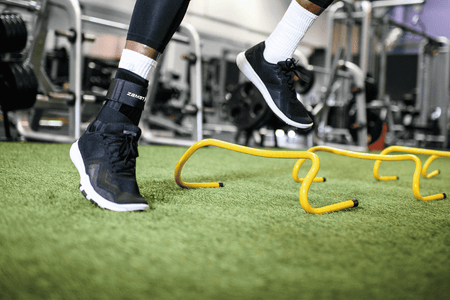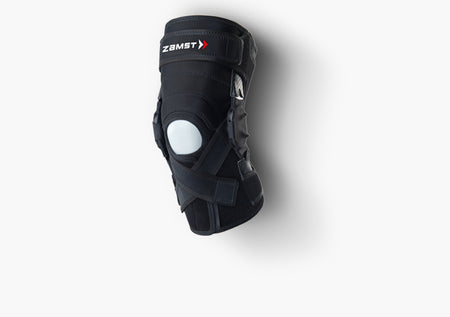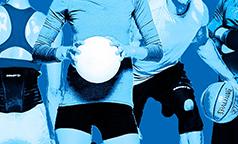
What is an ACL injury?
An ACL injury refers to damage or tear of the Anterior Cruciate Ligament (ACL). This is one of the major ligaments of the knee that provides stability for the knee especially during sport activities. It is located in the center of the knee and helps stabilize the joint by preventing excessive forward movement of the shinbone (tibia) relative of the thighbone (femur). It also helps control rotational movements of the knee. This is a major knee injury for an athlete to have because of the length in rehab to return to sport is.
ACL injuries or ACL tears are more common in sports
related activities such as basketball, volleyball, soccer and football. Each of those sports require knee stability during cutting, running, sudden change in direction, jumping and landing.

Why does it happen?
An ACL tear can happen from a lot of different reasons, but they typically occur during sport related activities. Activities that involve sudden stops, changes in direction, or direct impact to the knee.
They can result from non-contact mechanisms, such as pivoting or landing from a jump with improper technique or can be a result of a contact mechanism such as collisions or tackles in sports like soccer, basketball, football or skiing.
Pain is typically dependent on severity of the ACL sprain (tear). Mild to moderate sprains usually have the most amount of pain while a full tear can be painful for a few moments and then a player can walk off the field under their own power pain free but still havean ACL tear.

What are the symptoms?
Symptoms of an ACL injury may include the following:
- 1.A popping sensation (audible noise) at the time of injury
- 2.Immediate swelling of the knee
- 3.Pain
- 4.Instability or feeling that the knee is giving away
- 5.Difficulty with walking.
A diagnosis for an ACL tear can be made with a physical exam (clinical test), imaging studies (MRI) and assessment of symptoms.
Symptoms can range depending on the severity of the knee sprain for the ACL:
- Grade I: Ligament is stretched not torn
- Grade II: Ligament is partially torn
- Grade III: Ligament is fully torn
How Long Does it Take to Heal?
The healing time for an ACL tear can vary depending on severely factors including
- 1.Severity of the injury
- 2.Is surgery required?
- 3.Age and compliance with rehab protocols
Grade I: Typical recovery time is weeks
Grade II: Weeks to months and dependent if surgery is needed
Grade III: Surgery is most often required, and timeline is typically 6-9 months with return to sport around 9-12 months
For individuals who undergo surgery the recovery period last 6-12 months to allow graft to heal, restore for range of motion, strength and function.
Return to sport may vary depending on what sport, mental hurdles and previous history.
TREATMENT
1. Surgery
Treatment varies dependent on surgery vs non surgery approach. Typically, if an individual has a fully torn ACL they will need surgery to reconstruct the ligament to provide stability in the knee again. Surgery involves replacing the torn ACL with a graft, often from the patient’s own hamstring tendon or a cadaver graft. After surgery the patient will be fitted for a knee stabilizer (Knee brace) to reduce risks of retear in the first 6 weeks.

2. Physical Therapy
After suffering an ACL tear before heading to surgery physical therapy is often prescribed to work on knee stability, strength and range of motion prior to surgery. After surgery the focus will be on graft healing, gaining full range of motion, strength improvements, improving walking early on. After all the checkmarks have been reached and healing has been achieved the patient can progress to more dynamic sport related exercises.

3. Return to sport
Often in physical therapy there are return to sport
protocols that each patient needs to pass in order to return to their sport. Prior to returning to the sport, it is important that they are training dynamically for the sport they are preparing for. This will include dynamic
warmups, agility drills, sport mimicking exercises and lastly practicing without contact. Some athletes will need a sports knee brace early on when returning to sport for maximum protection.


PT, DPT, MS
Evan Jeffries
EVAN JEFFRIES is a physical therapist with a Doctorate in Physical Therapy (DPT) from the University of St. Augustine for Health Sciences. He has vast knowledge of the musculoskeletal system and has treated many orthopedic conditions by bringing a proactive approach to healthcare and lifestyle.
Brace Finder
Looking for a brace that best suits you? Dive into the Brace Finder and find the best brace for your symptom.

 Canada
Canada China
China France
France Korea
Korea

















































